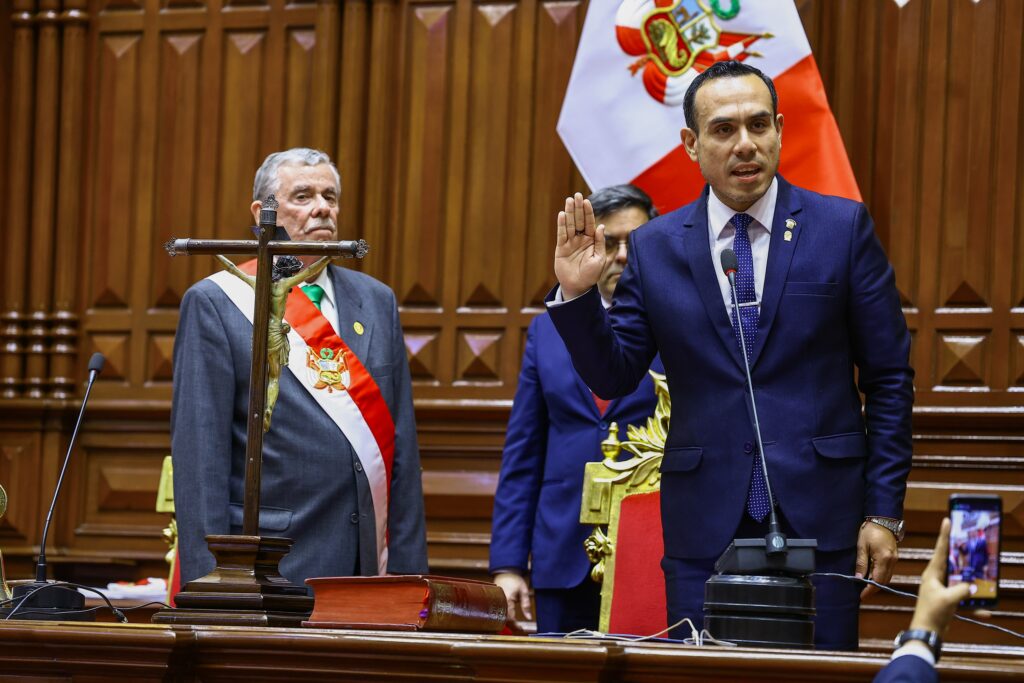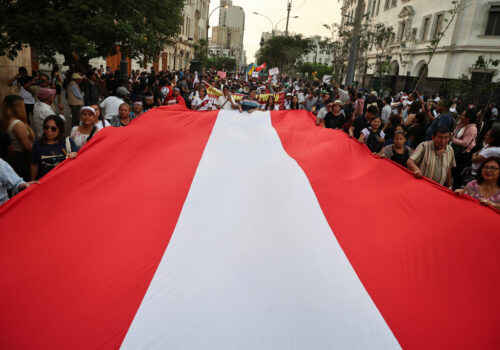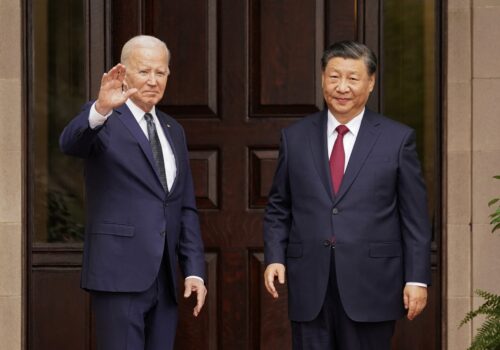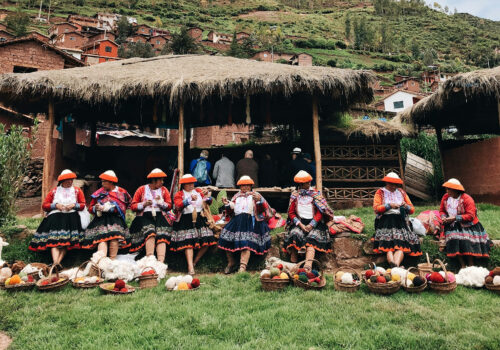Peru’s Congress removed President Dina Boluarte on Friday, following an impeachment trial, leading to the swearing in of José Jerí, Peru’s top lawmaker, as the country’s new president. Boluarte’s dismissal comes six months before Peru’s presidential election. Below, Martin Cassinelli, assistant director for the Adrienne Arsht Latin America Center, answers four pressing questions about what just happened and what to expect next.
1. Why did Peru’s Congress impeach Boluarte?
The cited cause for the impeachment of Boluarte was public outcry about her inability to combat the surge in organized crime affecting Peru’s citizens. Between 2019 and 2024, reported extortions in Peru increased sixfold, and this year every third Peruvian reported knowing a victim of extortion, many of whom are small business owners. Over the same period, homicides have doubled. In January of this year, there were 203 percent more homicides than in January of 2017.
What brought this issue to a head was an incident on Wednesday in Lima, where men on motorcycles opened fire with a machine gun on a popular cumbia band, injuring the band members. This horrific event was the impetus for impeaching the president. The Peruvian Constitution allows Congress to impeach and remove a president on the grounds of “moral incapacity” with a two-thirds qualified majority, which was reached early on Friday, with 122 votes out of 130.
2. Why now?
While the government’s inability to combat crime is the cited cause, the timing of the impeachment—six months before Peru’s presidential election—suggests a potential political rationale. Boluarte, who rose to power after former President Pedro Castillo was impeached in December 2022, did not have her own political party in Congress. She was only able to govern through an informal coalition with right-wing and centrist parties.
Even though Boluarte’s tenure was mired by scandals that precipitated her to become one of the world’s least popular presidents (at an approval rate of 3 percent), her coalition decided to keep her in power, even if it came at the cost of Congress’s own popularity (which in September was at 2 percent approval).
But as the election drew closer and the political parties keeping her in power prepared to launch their presidential campaigns, the continued support of Boluarte became a political liability for them. Once the parties, led by top presidential contenders Keiko Fujimori and Rafael López Aliaga, announced on Thursday that they would support her impeachment, the road for her removal was paved.
3. Who is Peru’s new president?
Boluarte was replaced, as the Constitution dictates, by Jerí, a little-known thirty-eight-year-old lawmaker who served as the head of the Congress. Jerí entered Congress in 2021 as former President Martín Vizcarra’s replacement, representing the same political party and electoral district, after the former president was disqualified from holding public office. Jerí became the Congress’s president in July 2025 with support of the same coalition of parties that had supported Boluarte in power. His first hours in office have been marked by the resurfacing of accusations against him, as Jerí has been involved in several investigations for alleged sexual assault and corruption, though none have resulted in convictions. Jerí has denied any wrongdoing.
Jerí will serve out Boluarte’s term as interim president. Elections are scheduled for next April, and Boluarte’s term was to end on July 28, 2026.
4. What are the implications for Peru’s 2026 election and its economy?
Boluarte’s impeachment should not be seen as the resolution of political conflict, but as the accentuation of a deepening institutional crisis. Since 2016, Peru’s presidents have governed with minority support in Congress and have been subject to the will of congressional majorities. As a result, Peru has seen eight presidents be inaugurated in the past decade, evidencing just how difficult it is to govern under Peru’s political system and dynamics.
Electorally, Boluarte’s impeachment and the inauguration of Jerí will likely do little to convince voters that the coalitions represented in Congress can overcome political gridlock and combat the surge of violence affecting Peru. As Peru enters its election cycle, the outrage over surging violence will now be accompanied by a frustration over the incapacity of Peru’s political system to deliver results. Ultimately, the combination of outrage and frustration among voters will provide a fertile ground for populist rhetoric that undermines the principles of Peru’s democratic political system.
However, Peru has managed to achieve a measure of economic stability, even amid the political instability of the last decade. The decoupling between politics and the economy rests on solid foundations: an independent central bank, strong international reserves, low public debt, and a mining sector driven by global commodity prices. While politics has faltered, the economy has remained standing thanks to institutional safeguards and external factors, such as foreign demand and the historically high prices of the metals Peru exports, including copper and gold.
Yet this resilience has clear limits. As long as institutions remain fragile, uncertainty will persist. Each presidential removal chips away at investor and public confidence. And although Peru’s economic buffer has averted a sudden collapse in the past decade, its political instability has led to postponed investments and the inability of the state to sustain long-term policy agendas.
Martin Cassinelli, a native of Peru, is assistant director of the Atlantic Council’s Adrienne Arsht Latin America Center.
Further reading
Thu, Mar 27, 2025
Peru’s crime wave: A populist opening or a chance for reform?
New Atlanticist By Martin Cassinelli
Solving Peru’s security crisis will require institutional reforms that combat political corruption and address the root causes of crime.
Wed, Nov 13, 2024
As Biden bids farewell, Xi advances China’s influence in Latin America at the APEC Summit in Peru
New Atlanticist By Martin Cassinelli, Caroline Costello
Beijing is successfully pairing its economic diplomacy with action, and the United States should be concerned.
Thu, Jan 30, 2025
Peru’s economy needs to unlock its green potential
Freedom and Prosperity Around the World By
Peru’s green transition offers a path to prosperity through renewable energy, critical minerals, and job creation. Prioritizing infrastructure, labor market reforms, and human capital development can drive growth. Political consensus around this vision is key to overcoming institutional weaknesses and positioning Peru as a global leader in the green economy.
Image: José Jerí is sworn in early Friday morning, October 10, 2025, as interim president of the country following the sudden and overwhelming dismissal of President Dina Boluarte by the same legislature. (Pool / Latin America News Agency via Reuters Connect)




